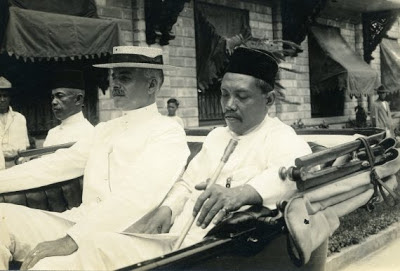A supporter lines up to pay her last respects to late Venezuelan
President Hugo Chavez, outside the Military Academy in Caracas on March
8, 2013. Venezuela gave Hugo Chavez a lavish farewell on Friday at a
state funeral that brought some of the world's most notorious strongmen
to...
THE
expected death of Venezuelan President Hugo Chavez from cancer has
produced predictable reactions all-round. The left mourned a fallen hero
who had “made” a revolution, the right basked in quiet hopefulness for
change, and the rest offered condolences to the extent their politics
afforded.
Yet the leader who broke the mould of Venezuelan
politics seemed to deserve less conventional responses to his 14 years
of reshaping the country.
In an otherwise balanced airing, the
BBC featured pundits variously calling Chavez “a communist” and
“anti-American”, blithely repeating the familiar line about his links
with Iranian and Russian counterparts being merely superficial.
CNN
took a business angle in accusing Chavez of under-investing in
Venezuela’s oil sector. And so on. Critics elsewhere alleged that he was
just another Latin American strongman who promoted the cult of the
individual and undermined democratic institutions.
Evidently,
Chavez did not dampen public enthusiasm for his leadership. But his
failure in upholding democratic institutions applies particularly only
within the narrow context of formal democratic procedure.
His
biggest contribution to Venezuela is to awaken the people to their
democratic birthrights like adequate housing, healthcare and education.
This
change has been so profound as to remake national politics, so that
even opposition politicians now have to promise the same thing, only
more. In a primal democratic institution and process, the masses would
vote with their feet against any candidate who dared to offer the people
less.
This transformation is further based on overturning
decades of unquestioned allegiance to the Washington Consensus of “open
markets”, “privatisation” and “deregulation”. A Latin America that has
changed thus is not about to change back too soon.
True enough,
Chavez had been a Latin American strongman. But that quality was more
cultural than political, as he adopted the classically paternalistic,
macho style of the Latin caudillo.
The difference, again, is that while previous Latin American caudillos tended to be pro-US right-wing dictators, Chavez was not that. So he is regarded differently or not at all.
There
is no doubt that Chavez and his policies were popular and not just
populist. One of the biggest problems for his opponents has been his
transformation of the state to serve public, rather than privileged
private, interests.
Critics have also tended to fundamentally
misread history, believing that Chavez had reinvented Venezuela. The
reality is that Chavez himself had been a product of the times in the
region, rather than the other way round.
The same regional moment
had also produced similarly progressive leaders in Argentina, Bolivia,
Brazil, Chile, Ecuador, El Salvador, Honduras, Nicaragua, Paraguay, Peru
and Uruguay. This so-called “turn to the left” in the region may
instead be named the “Latin Spring”.
Since the turn of the
century, the movement swept a region like the “Arab Spring” later did,
but with key differences. The Latin Spring involved more countries, far
more people, and was established democratically rather than through
bloodshed and foreign military intervention.
But despite its
strengths, it was not regarded positively by the Western establishment
and mainstream media, because another key difference was that it went
against Western-friendly despots rather than Western-averse ones.
And
Chavez was placed at the head of the movement because Venezuela was
seen to have started it all. From the lack of a positive reception came
the negative perceptions.
But the fact is that neither Chavez nor
any other individual, however gifted, could have masterminded or
stage-managed a historic regional movement even if he wanted to.
The
various Latin American countries are all sovereign nation states
dominated by no single individual. There is also no single power
“guiding” them other than the US that had done so before.
The new
era is one of each country taking charge of its own affairs for itself,
based on the people taking charge of the state. The time of death
squads, Iran-Contras and transnational corporations lording it over the
peasants is past.
It happened before, but in piecemeal fashion:
the fall of Nicaragua’s Somoza, Bolivia’s Suarez and Chile’s Pinochet.
It was never a broad movement like today’s.
The scale and reach
of the present movement is much larger than any single country’s
experience. It is also set to outlive individuals like Chavez.
Failing
to recognise this will mean failing to deal adequately with these
countries, at a time in history when they are also becoming more
important. It would also allow Cold War ideology to claim more unwitting
victims.
Chavez’s opponents and critics have long linked him
with Cuba’s Fidel Castro, an apparent error that is true and justified
but only unintentionally. Like Castro, he was essentially a Third World
nationalist pushed into making less than ideal linkages around the globe
by default.
But today’s newly awakened Latin America cannot be
pushed into the fold of a non-existent Soviet Union, nor of a Russia or
China too preoccupied with its own internal challenges and anxious only
for foreign markets or sources of raw materials.
Instead, they
are more likely to be pushed more closely to one another, finding common
cause among themselves and in relation to Washington and its
Consensus”. The new Latin America will remain different from before,
long after Chavez ‘s presidency despite its significant national
contribution to it.
Behind The Headlines by BUNN NAGARA
Related post:
http://youtu.be/jFqcMG6XjgQ








